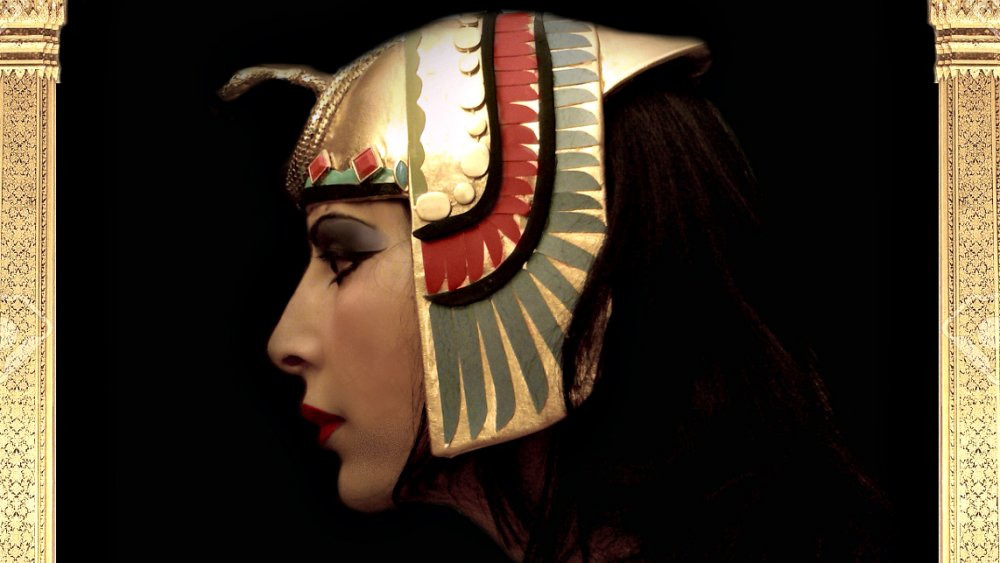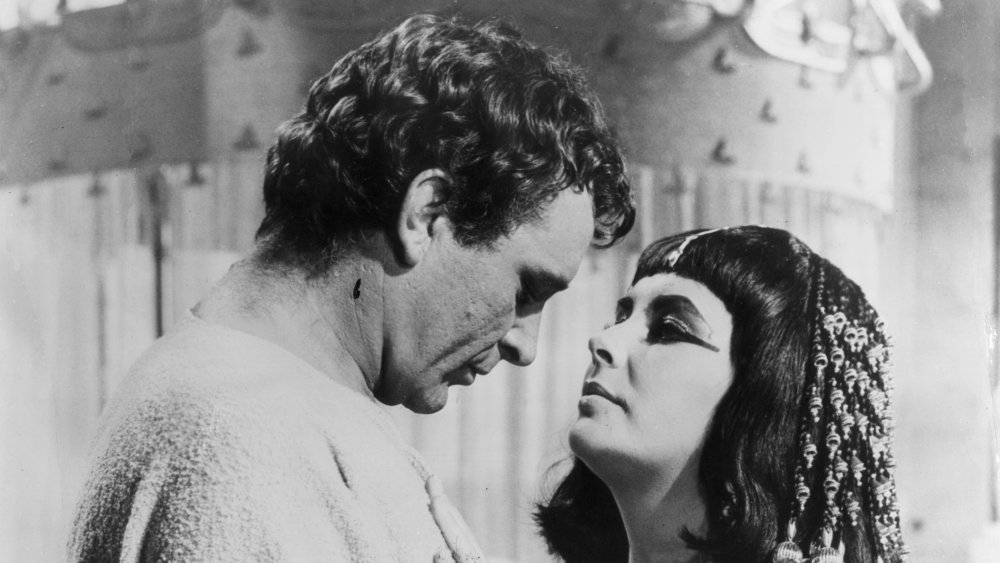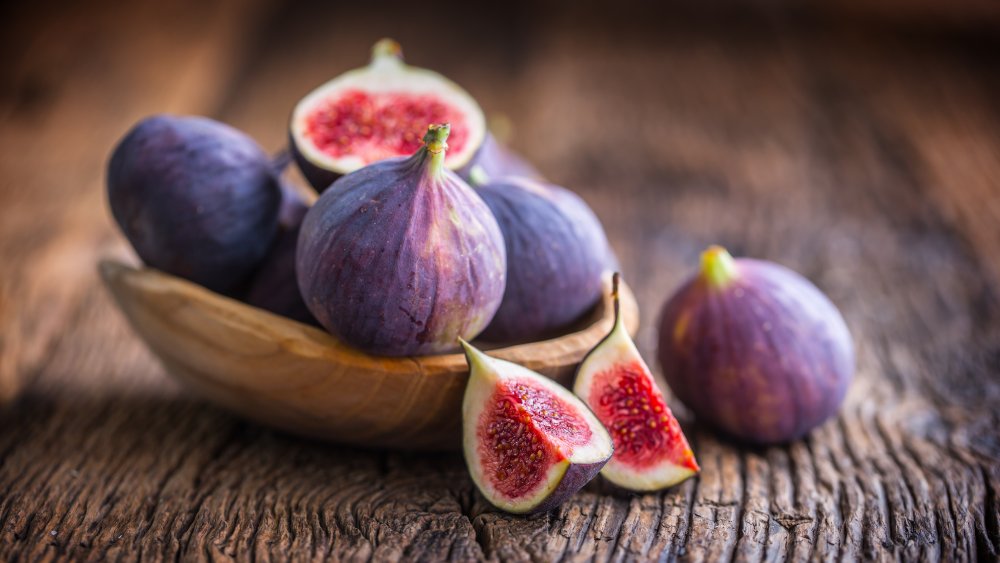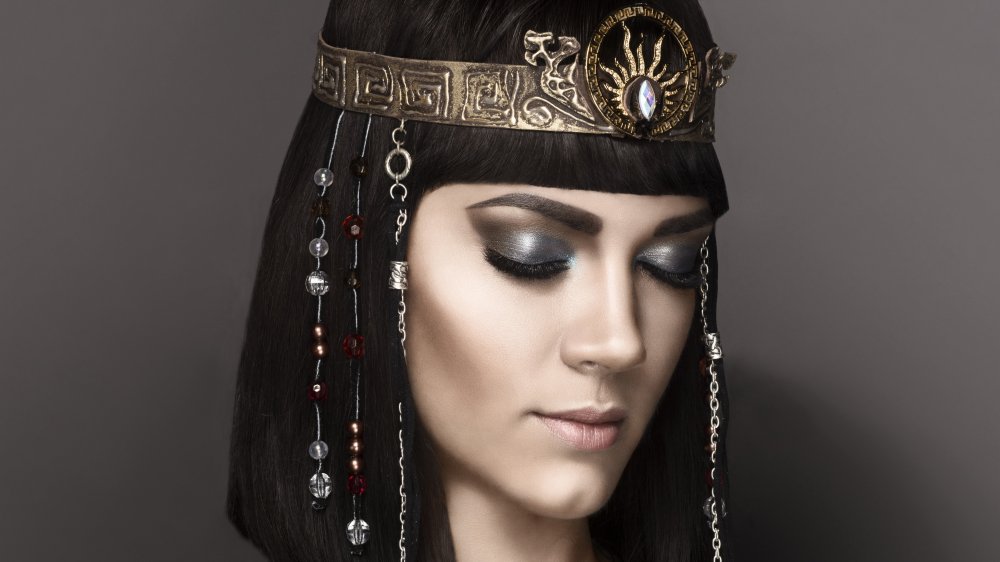What Cleopatra Typically Ate In A Day
Cleopatra had the seductive power to make men eat their hearts out and the destructive prowess to make her siblings bite the dust, but she also had a pretty full plate herself. When she wasn't busy feasting on Caesar salad, she had a massive empire to manage. As Live Science describes, her queendom spanned Egypt and Cyprus plus sections of present-day Libya and other Middle Eastern regions. She had to grapple with a lethal sibling rivalry and joined her lover, Marc Antony, in a losing battle against Caesar's son, Octavian, during a civil war.. Ultimately, Antony and Cleopatra bit off more than they could chew, and an asp allegedly bit the fabled pharaoh.
But they still made room for food. Antony made so much room that it supposedly led to an unusual food fight of sorts. As recounted by the University of Chicago she found Antony's penchant for "stuffing himself daily with rare foods" so distasteful that she bet she could best his extravagance at a banquet. Even better, she would eat a half-million-dollar meal all by herself. Roman historian Pliny Elder said, "The last of the Egyptian queens owned the two largest pearls of all time, left to her by oriental kings." Cleopatra had one of those massive pearls dissolved in extremely caustic vinegar and swallowed it. Before she could consume the other she was declared the winner.
Obviously, Cleopatra didn't spend most of her days eating pearl jam, so what did she eat?
A meal fit for a queen
History writes that bread and beer were the bread-and-butter of the ancient Egyptian diet. In fact, according to the book The Egyptian World, "The Egyptians computed salaries in units of bread and beer" because they were so essential to the daily diet. People were also hungry for hippo meat, hedgehog flesh, fish, cranes, and gazelles. Per author Ron Miller, Cleopatra probably ate like any rich Egyptian or Greek.
Cleopatra's breakfast likely consisted of wine-soaked wheat or barley bread with figs and olives. The bread might have looked like a pancake or tortilla or come in loaf form. For lunch she'd munch on something light, and dinner would be a sumptuous feast. She probably had plenty of lentil soup or pâté on her daily menu. Given the way her Ptolemy family line tended to eat, her mouth might have watered for onions, garlic and cheese. When she felt like dining on the animal kingdom, her plate probably included porcupine, quail, gazelle, goat, or ox meat.
And because, as queen, the world was her oyster, Cleopatra could also swallow pearls.
Cleopatra's last meal
The BBC describes figs as "a mainstay of Egyptian agriculture." Farmers used to train monkeys to harvest them. Pharaohs were buried with dried figs to feed them in the afterlife. And according to legend, a meal of figs with a side of deadly venomous snake sent Cleopatra to the great beyond.
Act I, Scene 2 of Shakespeare's Antony and Cleopatra foreshadows the pharaoh's fateful last meal. When a soothsayer says to Cleopatra's lady-in-waiting, Charmian, that she will outlive her queen, Charmian delightedly replies, "O excellent! I love long life better than figs." In the final scene of the play, Cleopatra receives a basket of figs, but the main course is a big bite of dust. An asp in the basket seals her fate, biting her bosom.
Clearly, Cleopatra loved figs better than long life. Though, according to the University of Chicago, she cut her own life short at the age of 39. The details of Cleopatra's death were actually a mystery to her contemporaries. The Greek writer Plutarch posited that she poisoned herself with a hollow comb and the Roman writer Dio reasoned that a snake bit her. Cleopatra's captor, Octavian, favored the snake story. And some versions of her death claim she didn't receive a basket of figs but of flowers. The University of Chicago claims that the inclusion of figs in the account might not be describing a real meal but inserting sexual symbolism.
Cleopatra's food for thought
Cleopatra's last meal might have been a nughty metaphor. While the BBC notes that figs were a staple of the ancient Egyptian diet, according to How Stuff Works, the Romans associated the fruit with fertility. Per the Encyclopedia Britannica, they held a March celebration of the goddess of childbirth "under a wild fig tree." Romans also referred to an obscene hand gesture as the "fig hand" (Mano fico) because they thought it resembled a woman's love bits. In fact, the Italian word for fig doubles as slang for the part of the female anatomy where a man would plant his fig tree.
The University of Chicago argues that given the carnal connotations of the fig, that accounts of Cleopatra's death that mention them are meant to cement her reputation as a "foreign seductress." Interestingly, one might find similar symbolism in the tale of Cleopatra swallowing her pearl. The Encyclopedia of Aphrodisiacs observes that Venus, the Roman goddess of love, was also known as the "pearl of the sea," and the hair surrounding her, um, love fig was dubbed "the pearl gate." Is it a coincidence that a Queen depicted as a sex symbol swallowed a a symbol of the goddess of love? Who gives a fig?



